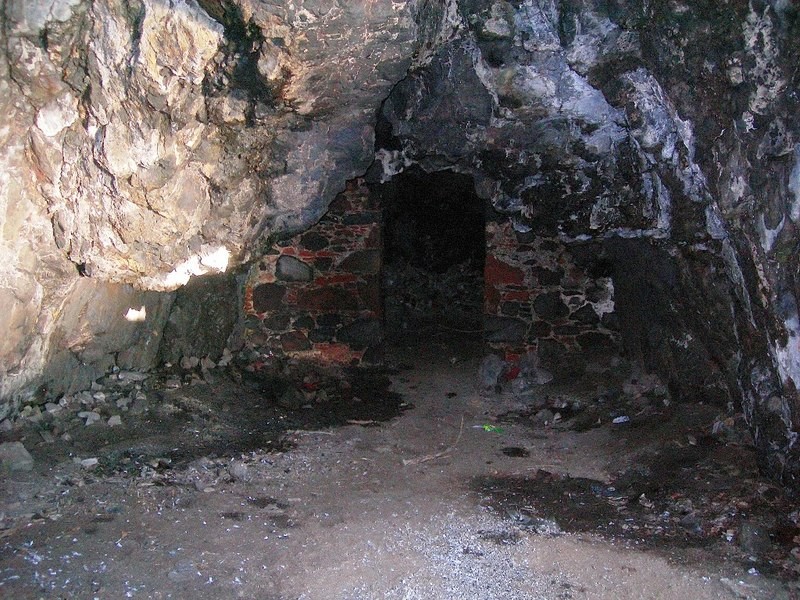Ice Age Cave Entrance in Germany Discovered 16,000 Years After It Was Last Occupied

Entrance to Ice Age Cave in Germany Discovered 16,000 Years After It Was Last Occupied
The original entrance of an Ice Age cave last occupied 16,000 years ago was finally found. The cave has been known to the archaeologists for years, but it took them long to locate its entry.
Ice Age Cave Entrance Found
A team of archaeologists led by Dr. Yvonne Tafelmaier of the University of Tübingen located the entrance to an Ice Age cave that was last inhabited between 16,000 and 14,000 years ago during the Magdalenian period in southern Germany, Newsweek reported.
Archaeologists already knew about the cave, but up until now, they had not found the original entrance. According to a press announcement about the discovery, Ice Age hunter-gatherers would have been the last to enter the cave through its original entrance.
Archaeologists collected more information while conducting six weeks of further digs that started in 2021, but the original cave entrance remained a mystery. However, researchers from the University of Heidelberg began exploring the cave in April of this year.
Using an imaging technique, they found a 65-foot cavity, and on July 4, they finally discovered the cave's original entrance. Sediment had entirely sealed the opening, making it difficult to locate until today.
Tafelmaier said in a statement that such a find is exceedingly uncommon in Paleolithic research and provides the chance to use current techniques to address significant concerns concerning the actions of late Ice Age hunter-gatherers.
Tafelmaier and her colleagues also discovered stone tools from the Ice Age and animal bones. When scientists made a hole in the cave's ceiling in 1978, they could determine when it had been in use and discovered a small portion of the cave. They discovered that hunter-gatherers would have likely found shelter in the cave during the Ice Age. Future archaeologists were left to do more research after the cave's opening was sealed off.
Excavations will continue next year.
ALSO READ: 240 Million-Years-Old Fossils of New Scorpion Species Discovered in Milan Museum
What Is Ace Age?
Ice Ages started 2.4 million years ago and lasted until 11,500 years ago. The Earth's climate fluctuated between extremely cold periods when glaciers covered a major portion of the globe and extremely warm eras when much of the glaciers melted. Warm times are known as interglacials, while cold periods are known as glacials, per CDM.
However, geologist Ro Kinzler says we are still in the ice age, which has been going on since about 2.5 million years ago. He claimed that the last ice age hadn't ended yet.
He added that the strange thing about ice ages is that the Earth's atmosphere's temperature doesn't stay frigid all the time. The climate fluctuates instead between what scientists refer to as "glacial periods" and "interglacial periods."
Tens of thousands of years pass during glacial periods. More of the earth is covered in ice, and temperatures are substantially colder.
However, the climate during interglacial eras is comparable to today's Earth and lasts only a few thousand years. Currently, we are in an interglacial phase. It started about 10,000 years ago, near the conclusion of the last glacial period.
14,000-year-old cave — where Ice Age
hunter-gatherers lived — unearthed in
Germany
BY MOIRA RITTER
AUGUST 07, 2023
The cave held Ice Age stone tools and animal bones, archaeologists said.
State Office for the Preservation of Monuments in the Regional Council of Stuttgart It’s been 45 years since an attempt to lay sewage lines at a Paleolithic site in Germany revealed an ancient cave. Now, experts have finally discovered the entrance to the cave — and have a better understanding of its purpose.
Experts first identified the site in 1978 after a hole was made in its ceiling, according to an Aug. 2 news release from the State Office for the Preservation of Monuments in the Stuttgart Regional Council. Archaeologists determined that the cave likely dated back to between 14,000 and 16,000 years ago, but they resealed the cave after a short excavation.
Archaeologists returned to the site in 2021 in hopes of learning more about the cave, officials said in the release. It wasn’t until July 4, 2023, that the entrance to the ancient cave was finally unearthed after being almost completely blocked by sediment.
The cave dates to about 14,000-16,000 years ago, experts said. Thomas Beutelspacher State Office for the Preservation of Monuments in the Regional Council of Stuttgart The cave appears to have been a residence for hunter-gatherers during the Ice Age, archaeologists said.
It held some Ice Age stone tools and animal bones. The discovery will grant experts greater insight into the lives of Ice Age hunter-gatherers in the area, according to Yvonne Tafelmaier, who led the excavations. Their research is set to continue next year.
The Ice Age era cave was first identified in Germany in 1978, but archaeologists only discovered its entrance in July.
Simon Werner State Office for the Preservation of Monuments in the Regional Council of Stuttgart The cave was discovered in the town of Engen in southwest Germany, near the border with Switzerland.
No comments:
Post a Comment